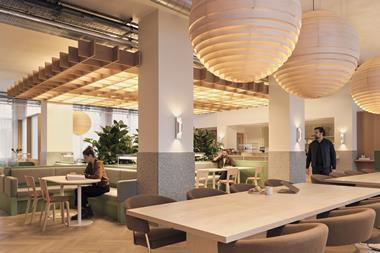
The pandemic has not been the death of the office. But there is no doubt that businesses, landlords and workspace operators must take steps to bolster people’s confidence in workplace safety post lockdown.
Not only can smarter ventilation systems offer reassurance about how Covid-secure a building is in the immediate term; they can help to prioritise health, wellbeing and productivity long into the future. Indeed, according to research by Harvard Business School, improved air quality alone can boost employee productivity by up to 2% – the value of which should not be underestimated in our recovery from the pandemic.
As businesses begin their return to the office, technology has a crucial role to play in improving both safety and wellbeing.
Contactless interfaces and motion sensors help minimise touch points in the office and limit energy usage solely to areas of a building where people are active – prioritising safety as workers return and driving sustainability in the long term.
While ventilation systems may play an important part in improving workplace health, landlords must also embrace smart building technology on a more holistic basis if they truly want to future-proof their assets. Internet of Things (IoT) technology, temperature sensors and smart lighting systems can also play a crucial role in creating office environments that prioritise employee health and wellbeing.
For building owners, now is the time to take note of technology in all its forms – be that robust connectivity or smart building tech. With many businesses rethinking their office footprint, CRE landlords and workspace operators must think seriously about how they differentiate themselves and attract tenants for the long term. Tech is key in this – and improved ventilation is only the beginning.
Richard Morris, director, technologywithin






























No comments yet